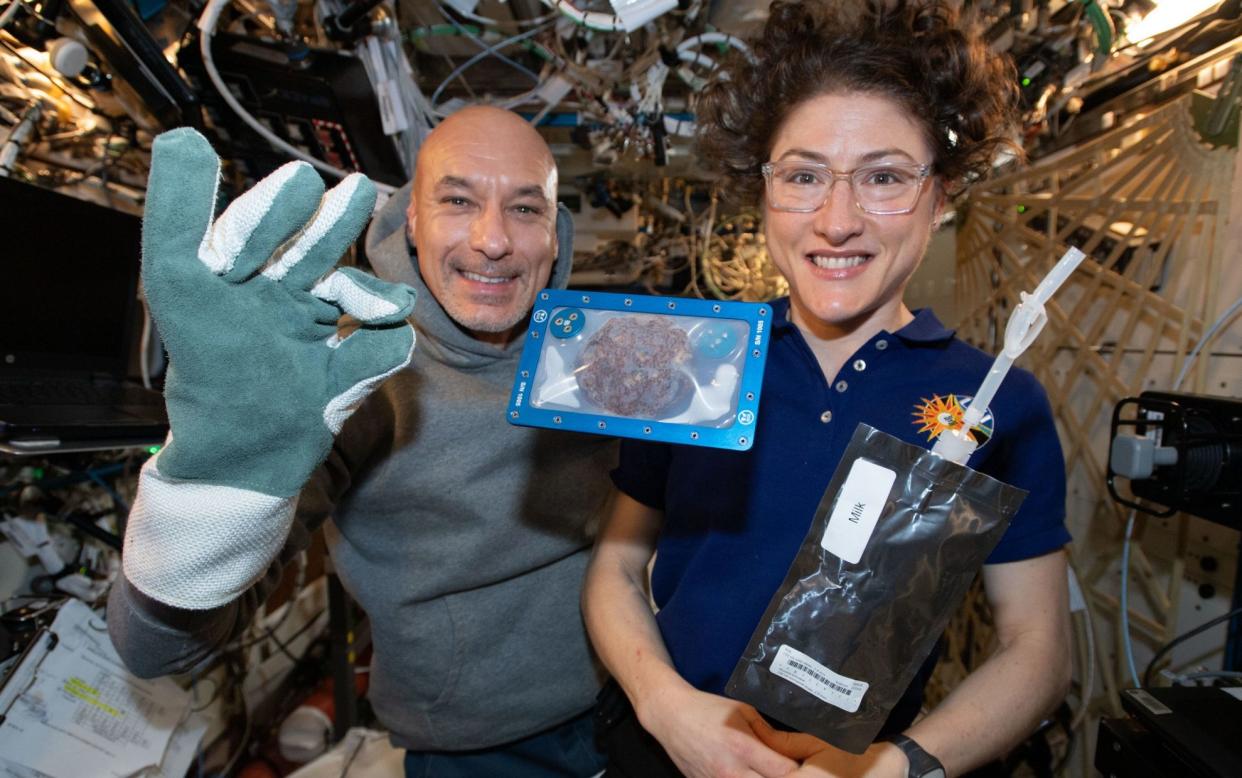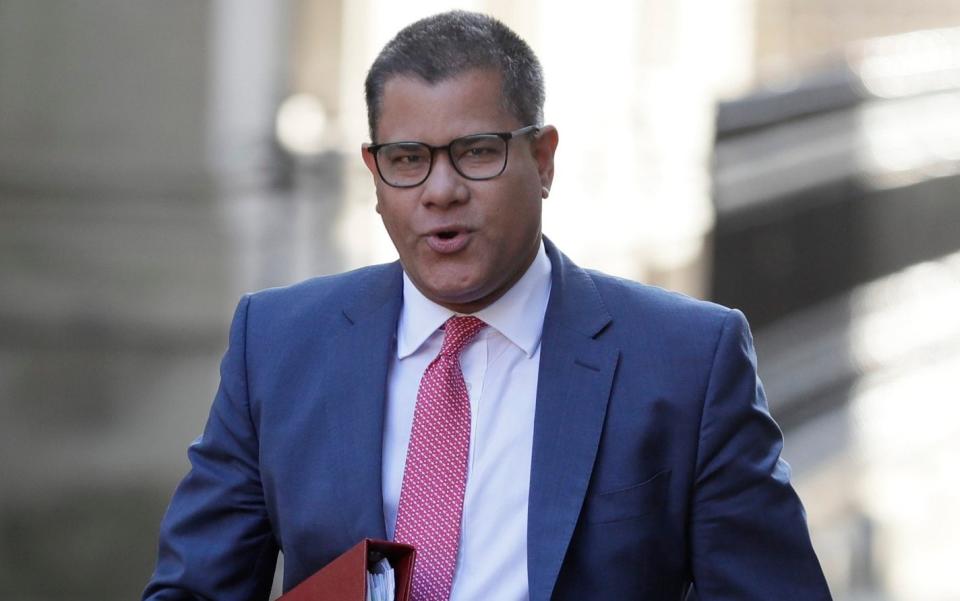International Space Station faces terminal threat from space junk

The International Space Station (ISS) will have to be abandoned if zombie satellites and space junk are not cleared out of orbit, the Business Secretary has warned.
Alok Sharma said that human space travel would no longer be possible unless we "clean up our act" and announced new funding to track floating debris.
Estimates suggest there are 160 million pieces of space junk orbiting Earth, ranging from tiny specks of broken spacecraft, to large defunct satellites, and they are zipping around the planet at 18,000mph, nearly seven times faster than a bullet.
Yet, only a fraction are currently tracked and the number of satellites is growing all the time, with several mega-constellations due for launch.
Experts predict that if a four-inch piece of space junk were to hit a satellite, smashing it to bits, it would set off a chain reaction that could destroy all satellites and render space a no-go zone for centuries.
So, the Government has announced £1 million seed funding for seven British projects aimed at monitoring debris in space through lasers, satellites and artificial intelligence.
Mr Sharma said the projects were crucial to allowing human space exploration to continue.
“If we don’t take action now, low-Earth orbit could become too perilous for satellites or even humans on the International Space Station,” he said.
“The space debris expert Don Kessler predicted in 1976 that the space around the Earth could become so riddled with junk that launches would become impossible and vehicles that entered space would quickly be destroyed.
“Anyone who watched Sandra Bullock defy the odds of survival in the blockbuster movie Gravity gets the idea.
“While we are all facing challenges here on Earth, this may seem like a problem that is best kept out of sight and out of mind, but there is a moral and economic imperative for us to do something about this space debris.
“If we want to continue to reach for the stars in the years to come and realise our ambitions to use satellite technology to improve lives on Earth, we need to clean up our act.”
The UK Space Agency is also worried that launches from planned British spaceports could falter unless debris is cleared out of orbit, and it has signed an agreement with the Ministry of Defence to work together on monitoring threats and hazards in orbit.
In 2019, there was a close call in which a spacecraft operated by the European Space Agency (ESA) needed to fire up its thrusters to dodge a £100 million Starlink satellite.
Currently, companies including Airbus are devising methods to remove junk from space by using harpoons and nets, but there is no way of tracking all the debris.
Enhancing space awareness
Companies funded include Lift Me Off, which will develop machine learning algorithms to distinguish between satellites and space debris.
Space awareness companies Deimos and Northern Space and Security will develop new optical sensors to track space objects from the UK whilst Andor, based in Northern Ireland, will enhance its astronomy camera to track and map ever-smaller sized debris.
D-Orbit UK, a space company with "solutions covering the entire lifecycle of a space mission" according to its website, will use a space-based sensor on its recently launched satellite to capture images of space objects.

Graham Turnock, chief executive of the UK Space Agency, said: “People probably do not realise just how cluttered space is. You would never let a car drive down a motorway full of broken glass and wreckage, and yet this is what satellites and the space station have to navigate every day in their orbital lanes.
“In this new age of space mega-constellations the UK has an unmissable opportunity to lead the way in monitoring and tackling this space junk.
“This funding will help us grasp this opportunity and in doing so create sought after expertise and new high skill jobs across the country.”
OPINION: Alok Sharma, Business Secretary: We're backing our scientists to clean up the cosmos

"On 2 July 2018, a £100-million satellite called CryoSat-2 was completing its daily rounds of monitoring ice caps back on Earth from an orbit of 700 kilometres above us, when mission controllers spotted a chunk of space debris hurtling towards it at 17,000 miles per hour," said Mr Sharma.
"To avert a potentially catastrophic collision, engineers fired up CryoSat’s thrusters and moved it out of harm’s way. This near miss was not the first, and it will not be the last.
"An estimated 20,000 pieces of space debris, better known as ‘space junk’, are whizzing around the Earth as you read this. This includes zombie satellites and whole junkyard’s worth of whirling fragments left over from space missions, risking catastrophic collisions.
"And this risk is only going up, with the amount of junk in low orbit increasing by 50 per cent in the last five years. Put simply, the plot of 'Gravity' could become our reality in space.
Satellites are critical to our everyday lives, added Mr Sharma, as they "keep us connected to families and loved ones during a pandemic, they track and give us insights on climate change, and they even tell us if we will need to take an umbrella on our lunch break".
"While satellite operators can dodge large pieces of debris and armour satellites to withstand the impact of smaller fragments, with the need for a growing number of satellites in orbit we must be able to monitor the space highways and to gradually clear it of obstructions.
"If we want to continue to reach for the stars in the years to come and realise our ambitions to use satellite technology to improve lives on Earth, we need to clean up our act.
Seed funding for UK firms
"That is why I'm delighted to announce over £1 million in government funding for seven of the UK’s most pioneering space projects that will help monitor hazardous space debris and protect the vital services we rely on every day – from mobile communications to weather forecasting.
"And although at present we do not own a celestial broom or a tractor beam that can wipe out each bit of detritus, the companies we are backing are developing technologies such as artificial intelligence and sensor technology, that will help up our game in spotting these risks and taking evasive action.
"We are championing new ideas in the form of London-based Lift Me Off, which is developing and testing machine learning algorithms designed to distinguish between satellites and space debris using thermal infrared and optical cameras.
"Meanwhile, Andor will use a scientific detector camera to help the astronomy community track debris which can interrupt ground-based astronomy.
"Another project will draw on the expertise of Fujitsu and Amazon, as well as Astroscale, to improve the commercial viability of missions that seek to remove debris – clearing the space highway.
"Each project represents a first step to developing new UK capabilities to help protect the space environment.
"And they all demonstrate the very best of UK science and innovation – bringing together the country’s brightest minds, taking us beyond the reaches of our own home planet to tackle some of our greatest challenges now and into the future.
"At the World Commission on Environment and Development in 1987, world leaders defined sustainable development as ‘meeting the needs of the present generation without compromising the ability of future generations to meet their needs’.
"In space, this test has yet to be met. Only by tapping in to the UK space sector’s growing expertise we will ensure we make this a reality."

